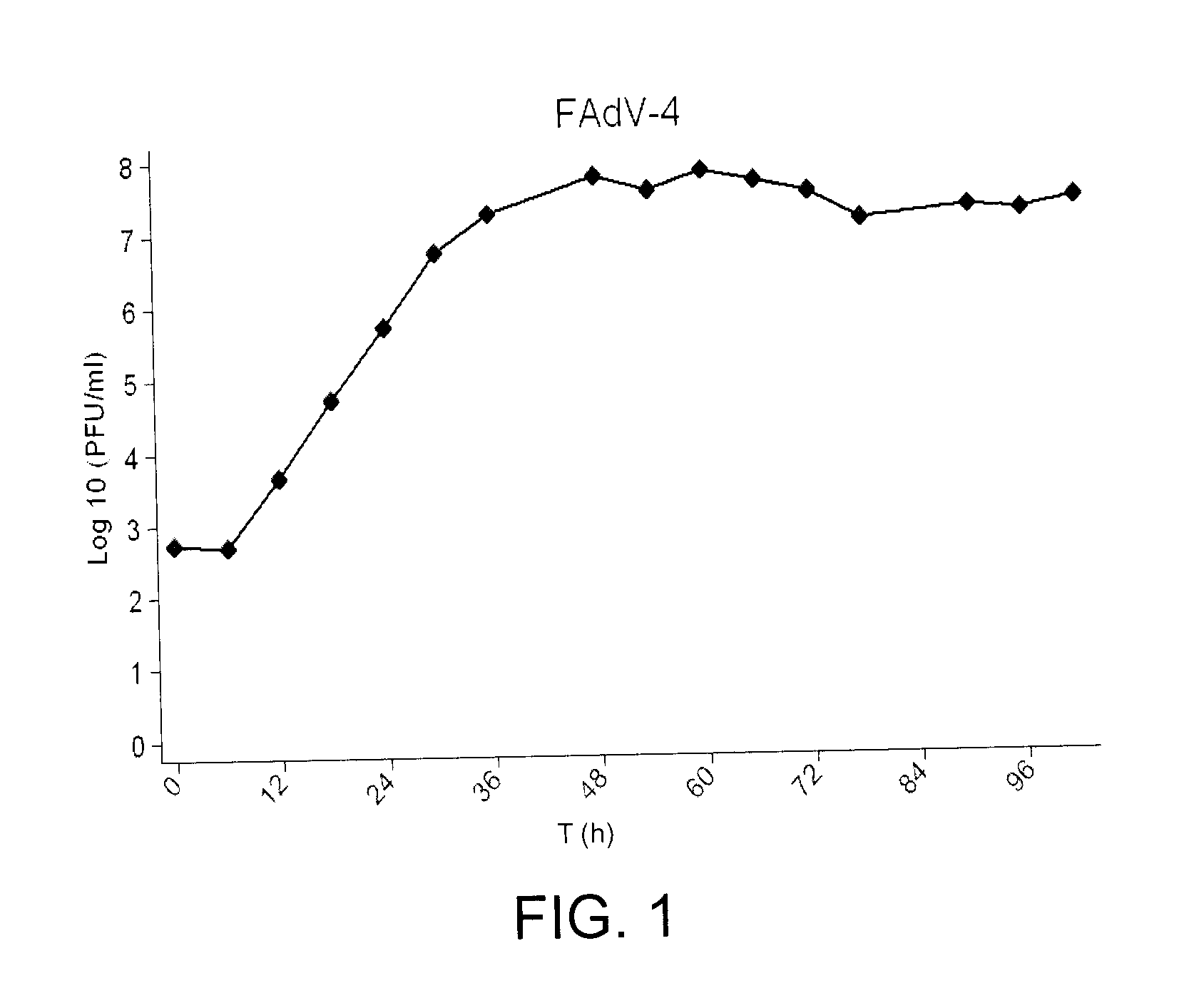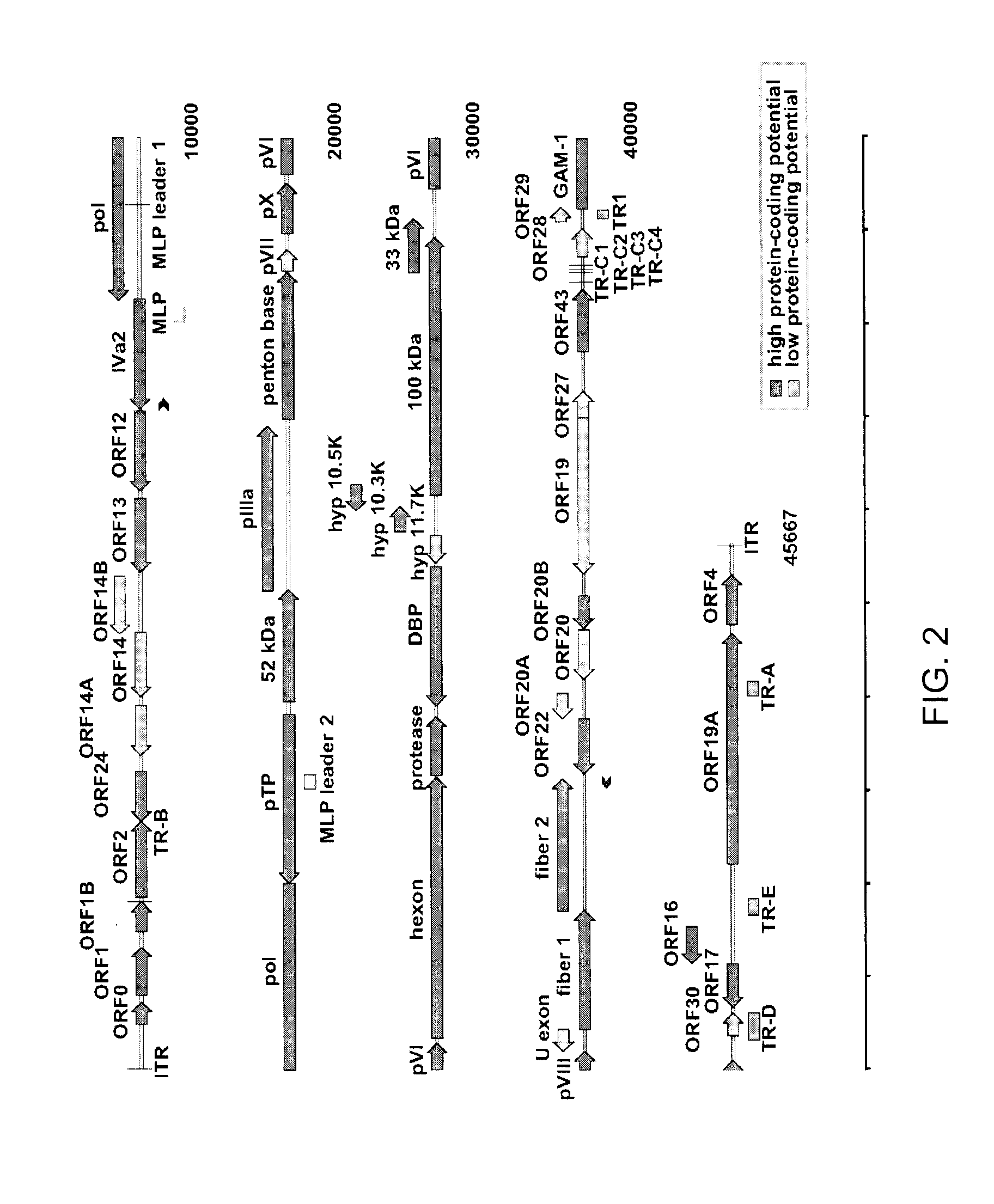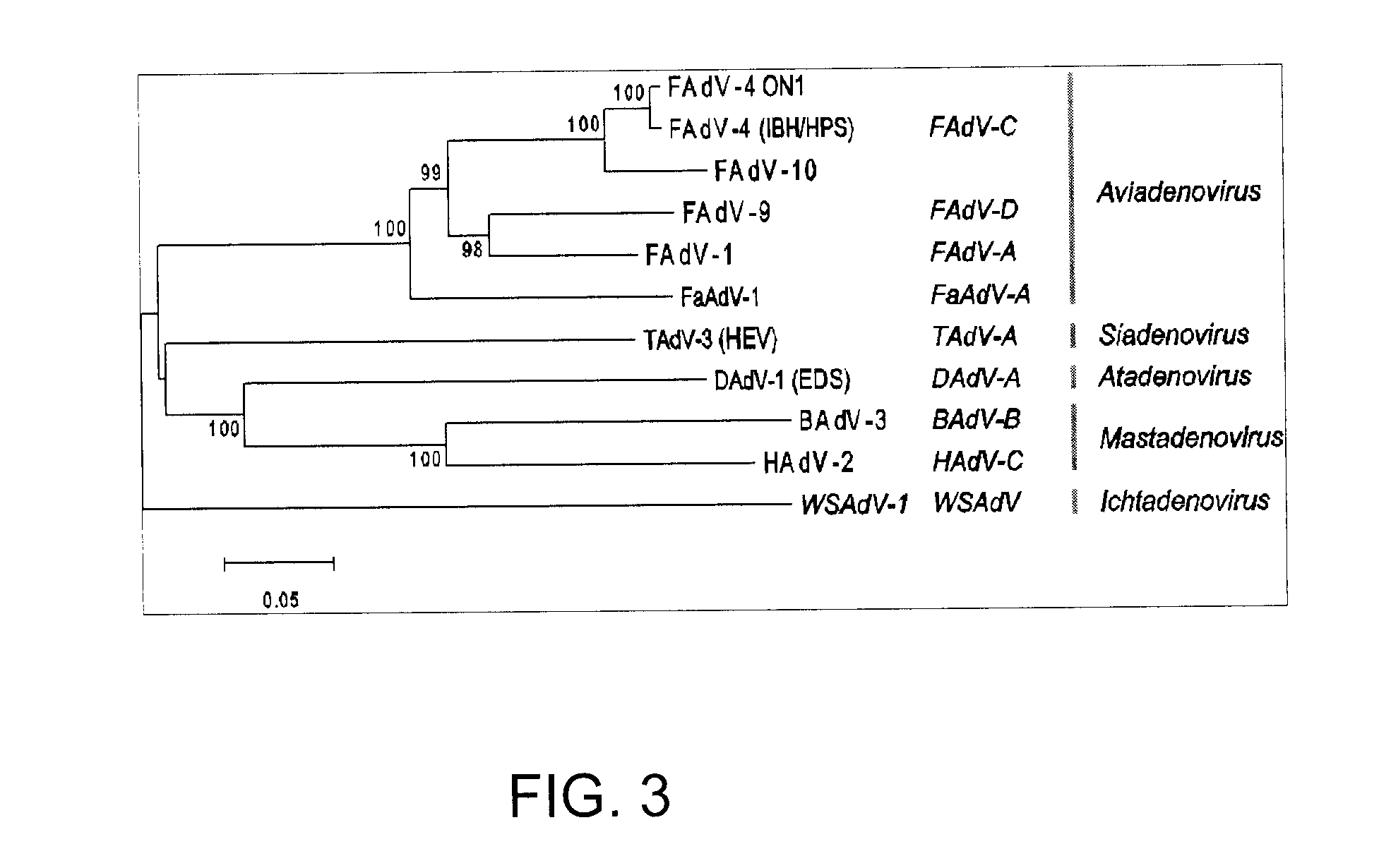Non-pathogenic serotype 4 fowl adenovirus (fadv-4) and viral vector thereof
a technology of non-pathogenic fowl adenovirus and vector, which is applied in the field of new non-pathogenic serotype 4 fowl adenovirus, to achieve the effect of high viral titer
- Summary
- Abstract
- Description
- Claims
- Application Information
AI Technical Summary
Benefits of technology
Problems solved by technology
Method used
Image
Examples
example 1
Coding Potential and Transcript Analysis of FAdV-4
[0044]First-generation recombinant FAdV vectors have been successfully developed as veterinary vaccines; however, the limited understanding of the protein-coding regions and virus-host interactions restrict their progression into next-generation vectors.
[0045]The FAdV-4 virus 04-50388 isolate was isolated from tissues collected from chickens of a Canadian broiler-breeder flock showing no clinical signs of IBH or HPS-IBH. Virus isolation was done at the Animal Health Laboratory (AHL), University of Guelph, Ontario, Canada. The virus was plaque purified and designated as FAdV-4 ON1. The virus was propagated in the chicken hepatoma cell line, CH-SAH, as described in Alexander, H., Huber, P., Cao, J., Krell, P. & Nagy, E. (1998). Growth characteristics of fowl adenovirus type 8 in a chicken hepatoma cell line. J Virol Methods 74, 9-14. As the time course analysis indicates (FIG. 1) FAdV-4 ON1 yields high titers in CH-SAH cells. The virus...
example 2
Pathogenicity Studies for FAdV-4 ON1
[0072]a) Experimental Design
[0073]A trial in white Leghorn specific pathogen free (SPF) chickens was conducted to assess the pathogenic potential of the virus. Briefly, 10-day old chicks were inoculated intramuscularly (im) or orally, with 2×108 plaque forming units (pfu) of the virus. The control birds received PBS. All chickens were re-inoculated at 14 days of age with the same dose of virus. The birds were observed daily (3×) for clinical signs and drown randomly for necropsy at each 0, 3, 5, 7, 14, 21, 28 days post-infection (d.p.i.). The chickens were euthanized, necropsied, examined for the presence of gross lesions and tissues from liver, bursa of Fabricius and cecal tonsils (ct) were collected. Cloacal swabs were taken from all birds at 0, 3, 5, 10, 14, 21, 28 d.p.i. and their virus titers were determined in CH-SAH cells. In addition, chickens were bled at weekly intervals 0, 7, 14, 21, 28 d.p.i. and serum samples were tested for FAdV-spec...
PUM
| Property | Measurement | Unit |
|---|---|---|
| Fraction | aaaaa | aaaaa |
| Fraction | aaaaa | aaaaa |
| Fraction | aaaaa | aaaaa |
Abstract
Description
Claims
Application Information
 Login to View More
Login to View More - R&D
- Intellectual Property
- Life Sciences
- Materials
- Tech Scout
- Unparalleled Data Quality
- Higher Quality Content
- 60% Fewer Hallucinations
Browse by: Latest US Patents, China's latest patents, Technical Efficacy Thesaurus, Application Domain, Technology Topic, Popular Technical Reports.
© 2025 PatSnap. All rights reserved.Legal|Privacy policy|Modern Slavery Act Transparency Statement|Sitemap|About US| Contact US: help@patsnap.com



